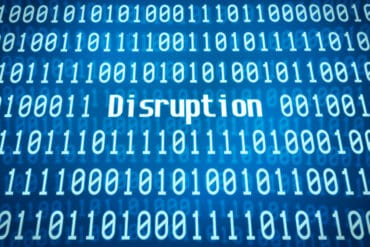
It’s crucial that companies be transparent with their employees about what they are monitoring and why.
With the arrival of the COVID-19 crisis came widespread closures of companies, and with it, an unprecedented dispersal of employees sent home to work. For many nervous managers and executives, the challenge has been making sure that their teams were on track with their work, operations were functioning, and valuable data remained secure. How can employee performance be maintained?
Technology offers solutions to keep tabs on when employees were at their workstations, start and finish times, and even the length of their breaks. But is this a proper approach? Invasive monitoring may have an opposite effect of what is intended, diminishing productivity.
See also: Thermal Scanning Robot Could Be Deployed In Hospitals
“Even before Covid-19 sent an unprecedented number of people to work from home, employers were ramping up their efforts to monitor employee productivity,” Reid Blackman writes in Harvard Business Review. Surveys showed that about half of corporations were electronically monitoring employee activity. With the sudden surge in working from home,
“employers are left wondering how much work is actually going on. The fear of productivity losses, mingling with the horror of massively declining revenues, has encouraged many leaders to ramp up their employee monitoring efforts.”
This sudden migration — and privacy implications — concerns privacy professionals responding to a study from EY and iApp. When asked to
identify the top privacy challenges stemming from COVID-19, understanding privacy requirements associated with employee remote work was the top pick, chosen by about half (49%) of respondents.
There are even measures underway for monitoring employees coming back to the office, the Wall Street Journal reports. These include the use of thermal cameras to monitor body temperatures and sensors to monitor social distancing.
For now, issues that managers face with everybody working from home include unclear productivity and accountability, breakdowns in team communication and collaboration, heightened cybersecurity and data compliance risks, employee isolation and mental wellness, and difficulty achieving and maintaining work-life balance.”Without the benefit of face-to-face guidance throughout a project lifecycle, remote employees may struggle with daily time management and task prioritization,” relates an ebook from ActivTrak, a vendor in the employee monitoring space. “This could lead to inefficient workflows, missed deadlines, and other costly consequences for the organization. Because of the lack of in-person facetime, remote employees often have fewer interactions with their managers and team members. That can, in turn, lead to decreased visibility into their performance or potential workflow bottlenecks. To adapt, managers need new strategies and technologies that can provide this visibility.”
Many vendors offer tools that use “stealth monitoring, live video feeds, keyboard tracking, optical character recognition, keystroke recording, or location tracking,” Blackman observes. This even includes random screen captures, or recording keyboard activities. Companies that implement tools as blunt productivity instruments, however, may see their efforts backfire. “Despite the easy availability of options, however, monitoring comes with real risk to the companies that pursue it,” says Blackman. “Surveillance threatens to erode trust between employers and employees.”
While ActivTrak offers electronic monitoring tools, the authors of its ebook endorse open, supportive policies and communications to build trustworthy remote relationships. The book’s authors recommend data analytics as an approach to assessing “remote employee workflows and guide, evidence-based opportunities for improvements.” Just as importantly, they urge employees and employers “to understand that they are all in this together, and have shared responsibilities’ to make remote work productive. Remote work policy essentials should include clearly defined expectations around working hours and maintaining productivity levels, as well as being safe and secure where work is happening.”
Metrics are still essential, but Blackman advises that they be selected carefully. “Applying numbers to things is easy, as is making quick judgments based on numeric scores spit out by a piece of software. This leads to both unnecessary surveillance and ill-formed decisions,” he warns. “If you insist on monitoring employees, make sure what you’re tracking is relevant and necessary. Simply monitoring the quantity of emails written or read, for instance, is not a reliable indicator of productivity.”
Get everyone’s input on what metrics really matter — from hiring managers to supervisors to “those who are actually being monitored,” Blackman says. It’s also crucial that companies “be transparent with your employees about what you’re monitoring and why. Part and parcel of respecting someone is that you take the time to openly and honestly communicate with them. Tell your employees what you’re monitoring and why. Give them the opportunity to offer feedback. Share the results of the monitoring with them and, crucially, provide a system by which they can appeal decisions about their career influenced by the data collected.”
Trust is a bond that needs to be painstakingly built, and can easily be lost. At a time when management is out of view, trust is the guiding force that will keep organizations up and running.




























